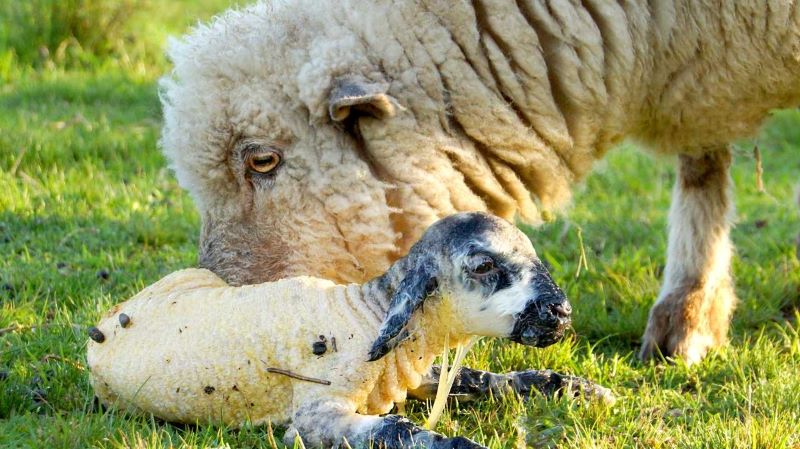
Beware of New Mums!
Bringing new life into the world is always exciting, but it comes with its challenges. Whether you're dealing with calving, lambing, fawning, kidding, or the arrival of baby chicks, one common thread binds them all—the protective instincts of new mothers. In this article, we'll explore what to watch out for and how to keep yourself and your animals safe.
Even in the most domesticated animals, surging maternal hormones can trigger a return to wild instincts. The usually quiet mother can become dangerous, and as their caretakers, it's crucial to recognise and respect these instincts.
What to look out for
When you are approaching any animal with a newborn, watch for their reaction to you from a distance. If the mother’s head is up, she looks rigid, or staring at you with a “get out of my space look” it is usually wise to not proceed further. If you really have to have a close up personal look, then walk very, very slowly and talk softly to mum in low, calm tones. She needs to know you are not a threat to her or her baby. If you really have to get close to the baby, have another person for back up!
Don’t chase the mother away from her newborn as this is likely to stress her further and interfere with the bonding process.
If you have to move the newborn, for example to a shed or another paddock, make sure the mother can see the newborn at all times. If she loses sight she may run back to the birth spot to find it. Move slowly and talk in low, calm tones with frequent rests where you back off so she can sniff and lick and reassure herself that all is well.
Reverting to the wild
All our farmed animals are prey animals. Despite domestication, their ‘Flight or Fight’ instinct is always there - this works in our favour when we want to shift them from one paddock to another.
However, when they have a newborn, that instinct can be much stronger and that is when people can get into trouble. A new mother will usually want to protect its baby come hell or high water, especially when it is at its most vulnerable to predation.
Cattle
Cows can be particularly aggressive when they have a new calf. If you have to tag or weigh a calf, or have some other reason to handle it, take someone else with you and make sure you have an escape plan. If possible keep a fence or vehicle between you and the cow. If you get charged by a cow, you may end up having a sprint across the paddock!
When handling the calf, never stand between it and mum. Always handle it so the calf is nearest to the mother. Many people have been seriously injured by a cow suddenly head butting them when they have had their back to the cow and the calf in front of you.
What about smaller livestock?

From ewes to hens, our smaller animals can be just as protective of their offspring. A ewe can cause injury if she decides to charge and it can happen quite unexpectedly.
Hens can peck at you and attack with their front feet while protecting their chicks, so try not to get your face too close to the hen or her chicks, or you could end up with some nasty injuries to your face!
Man's best friend
The best natured bitch can turn into a growling, hackle-raised, wild looking dog when it has pups. It is a good idea to not let children near a bitch with new pups as they can turn and bite if they feel threatened. Have one person that regularly checks the mother and her puppies. As they get older, the bitch will be less wary and other people can be introduced.
In summary
You don’t know in advance how any new mother will react to your presence. She may be totally fine with you being there and handling her newborn. That’s great and much easier for you.
However, every year people are injured by livestock and cattle are a lot larger than we are and can cause serious injuries. Always be alert to your animal's behavioural cues. Learn to read their body language and when to steer clear. If the newborn is acting normally and you’ve seen it have a feed, then it is better to leave mum and baby well alone and observe from a distance. Less stressful for all concerned.
As the offspring grows and it is more independent, the dams will start to relax and won’t have the same protective drive compared to when the newborn is at its most vulnerable stage of life.
If, for any reason, you have to approach a newborn, or move it to a barn or shed, have two people, take your time and keep noise levels to a minimum. While you’re handling the youngster, always keep one eye on mum, never get so wrapped up with what you’re doing that you don’t see her coming!
For more great information on looking after livestock check out our courses.
© 2024 LSB Ltd. All Rights Reserved.


